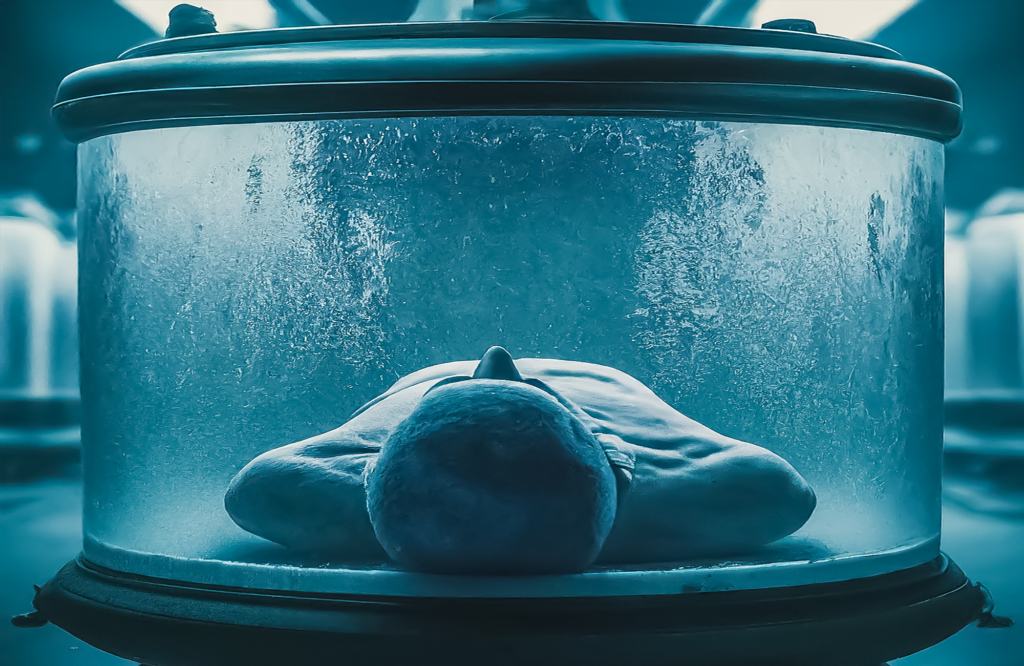Can We Freeze a Body and Bring It Back to Life?
From filmmakers to novelists, and from all the way to tech billionaires, cryonics has been a topic of interest to all. But with its first cryonically preserved patient now being taken in, Australia asks a very pertinent question: Can we really freeze a body and bring it back to life?
Cryonics, an Allure
Cryonics is the practice of freezing a body immediately after death in hopes that it will be possible to revive it in the future; this evokes a sense of fascination among many. From sci-fi films to the dreams of tech billionaires, the concept of cheating death through freezing has persisted across generations. Just recently, it was announced that Australia had frozen its first cryonics patient, a development that marked a milestone in the country’s forays into this highly contentious field. How much real science underpins it, or is that just a modern myth? Let us delve deeper into the truth of cryonics and its future possibilities.
The Cryonics Process
What is Cryonics? Cryonics is the preservation of the human body, or the brain, at ultra-low temperatures after one has died, in the hope that some future technology may be developed which can revive the person. The body is cooled down to below minus 200 degrees Celsius; at this temperature, all metabolic processes stop, and the person is placed in suspended animation.
This week, the body of the 80-year-old man has been preserved to become Australia’s first cryonically preserved patient inside a small town between Sydney and Melbourne. The upside-down body was stored in a vacuum-sealed vessel kept at cryogenic temperatures. This marked a huge moment for the facility responsible for its preservation, Southern Cryonics, which had spent the past 14 years preparing for such a time.
The Science Behind the Freeze: The theory behind cryonics is basically that, by bringing all biological activity to a close, an individual can be effectively preserved indefinitely, until future medicine has advanced to the point of being able to reverse death. At present, scientific knowledge is still very distant from this objective, since the process of freezing itself creates substantial damage to cells and tissues.
Skeptic’s Corner: Cryonics as Pseudoscience
Lack of Scientific Proof: There is just no scientific evidence that a cryonically frozen body can ever be brought back to life, says Professor Gary Bryant from the Royal Melbourne Institute of Technology. He even labeled cryonics as a “pseudoscience,” remarking on how, at present, such practice under current technology faces mere speculation.
Challenges in Revival: The basic problem with cryonics is that when something is frozen, ice crystals form within the cells, causing irreversible damage. Even if we were somehow able to get a body to unfreeze, the damage it sustained in the freezing process would probably prevent revival, given today’s knowledge.
More important, however, are the ethical and philosophical questions that go beyond the purely technical challenges to cryonics: the ethics in relation to the definition of life and death. Could a person who has been dead for decades really be brought back to life, or only a copy? The answer to these questions is open.

The Future of Cryonics: Hope or Hype?
Advances in Technology: Proponents of cryonics say that future developments in nanotechnology, tissue regeneration, and molecular repairs will one day make revival possible. These technologies are, however, still in their infancy and may take centuries to develop, if at all.
Cryonics and the Rich: Many rich individuals have been interested in cryonics, having looked at it as a way to attain their aim of immortality. No matter the lack of scientific evidence to prove the theory, the idea of living beyond death is simply too tempting for those who have the resources to try.
A Waiting Game: So, for the time being, frozen bodies in cryonics facilities around the world lie in a sort of limbo, awaiting a future that will never arrive. Whether cryonics ultimately will be vindicated or debunked remains to be seen.
Conclusion
Cryonics, with promises of life after death, is still fascinating and inspiring. But at least for now, it’s solidly in the realm of speculative science. Where the idea of freeze and revive might charm the imagination, the current scientific consensus—clean as it is—is not anywhere near. Who knows what the future may bring, given the immense leap in technology? For now, cryonics is still an experiment in hope rather than a proved pathway to immortality.
Stick with us for much more on the future of life and death.

The boundary between life and death is
not so sharp as we think.
— Mary Shelley

Would you sign up for
a frosty forever? 🧊❄️
Share your thoughts in the comments below!




